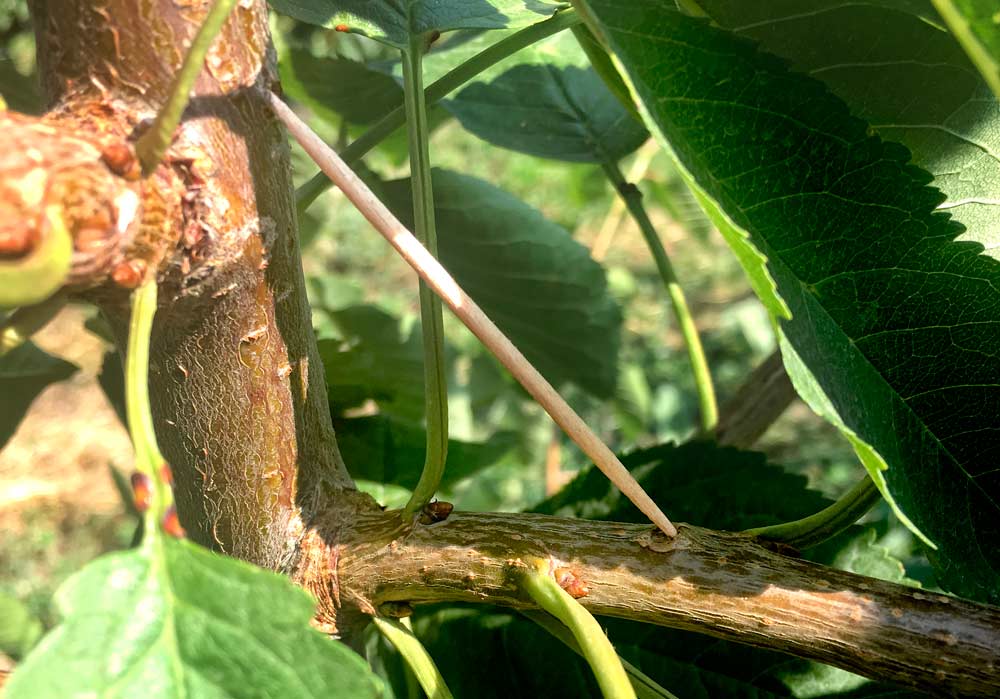
Orchard managers at Coral Beach Farms in British Columbia, Canada, train first-year cherry trees by wedging a toothpick between the leader and young shoots to widen the crotch angle and make more lateral branches, like on this tree in Winfield. (Ross Courtney/Good Fruit Grower)
Cherries are on the rise in British Columbia, Canada.
The International Fruit Tree Association summer tour in July visited two commercial orchards, both owned by Coral Beach Farms, based in Lake Country. The company, one of the largest sweet cherry producers in Canada, sells under the trade name Jealous Fruit.
Here are a few of the growing techniques their orchard managers shared with the tour group.
They use toothpicks to train young trees. In the first spring in May, when shoots are about 3 to 4 inches long, workers wedge simple toothpicks between leaders and young shoots to increase the crotch angle and space out the branches.
The trees naturally push them out of the way as they grow.
The next spring, they use string and screws. To keep that lateral growth moving, employees tie a biodegradable string to the ends of branches and anchor the other ends with stainless steel screws right into the trunk of the tree.
They have few problems with cankers developing at the wound, said Gayle Krahn, one of the company’s orchard managers. “Not enough to stop doing it,” she said.
Pruning is the company’s No. 1 technique for crop load management and they usually shoot for 8 to 10 tons per acre.
They cut back water shoots from mid to late June, right before harvest. Right after harvest, they top cut with chain saws on their vigorous blocks, looking for renewal cuts at the same time. They make renewal cuts in the lower parts of the trees in full dormancy.
They renew branches on a five- or six-year rotation starting after the first bearing year.
For their colder orchards, either farther north or at high elevation, they prune with a lighter touch to give themselves a cushion against winter bud kill.
Most of their trees are central leaders on Mazzard roots, though they have some V-trellises on Gisela.
The V-trellises have earned them a small bump in yield per acre over central leaders and also lead to more efficient helicopter drying and better spray coverage, said Craig Dalgliesh, another orchard manager.
The V-trellises also cause less picker fatigue and lead to quicker harvesting once the pickers, working in teams of two, get used to it.
They stub cut one-year wood uprights to 6 to 8 inches. “Doesn’t always look pretty, but we don’t sell trees,” Dalgliesh said. •
—by Ross Courtney






Leave A Comment